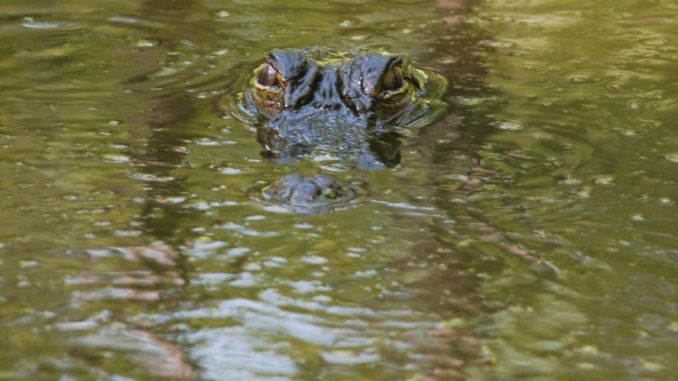
Officials with the South Carolina Department of Natural Resources have added a wrinkle to the drawing for permits for this fall’s alligator season as they look for a fourth-consecutive record harvest.
Jay Butfiloski, the SCDNR alligator project leader, said in addition to 1,200 permits being available for the month-long season, an additional 16 will be offered on two WMAs for week-long hunts. The 2011 season will run from Sept. 10 at noon until Oct. 8 at noon. Hunters have until June 15 to apply for a permit. A drawing will be held in July, and 300 hunters will have the opportunity to take a gator in one of four hunt units: Pee Dee, Midlands, Middle Coast and Southern Coast. Tags cost $100 for resident hunters. Also, Butfiloski said SCDNR will draw for an additional 16 tags, eight each that will give hunters almost exclusive rights to hunt on the Santee Coastal Reserve or Bear Island WMAs for a week. Those tags will cost $500 each for residents or $800 for non-residents. The luck of the draw could result in hunters drawing one general tag and one WMA-specific tag.
“We will allow two people on each WMA from Monday at noon until Saturday at noon; they’ll have almost exclusive use of the property,” said Butfiloski, explaining the higher price-tag for the WMA tags. “And if you don’t fill your tag that week, you can go to the neighboring hunt unit and take one.” Last season, hunters took a record 471 gators during the month-long season, an increase of just under 5 percent over 2009 harvest numbers for a success rate of 63.6 percent for those hunters who bought tags and went afield. Tagged animals averaged 9 feet, 2 inches long. Despite the good numbers, other statistics tell SCDNR that it wasn’t quite as easy. “While success rates are increasing, we’re starting to see an increase in the effort required to kill an alligator,” said Butfilosky, who noted that hunters drawn in the first season during 2008 took an average of 2.4 trips to use their tag, while it last season each harvested gator required 3.7 trips. “They’re getting a little bit better at what they’re doing,” he said.
“You’re getting groups of people out there who have done it before. The first year, we had a lot of people out there just wandering around.” Last season, the Southern Coastal Unit produced the most gators (147) with animals averaging 8 feet, 7 inches in length. The Middle Coastal Unit harvest was 108, with gators averaging 9 feet, 7 inches; followed by the Pee Dee with 109 (8 feet, 8 inches average) and the Midlands with 104 (9 feet, 7 inches average). Two gators taken last year measured 13 feet, 8 inches, matching the biggest specimens from the 2009 season, and nine 13-foot gators were taken, also matching 2009’s harvest of huge reptiles. “We had the same number of 13-footers, but the numbers of 9-, 10-, 11- and 12-foot animals were down slightly,” Butfiloski said.
“Those 13-footers can be as young as 30, maybe slightly younger in excellent habitat, but they’re more likely to average about 40 years old.” Georgetown County again led the state with 100 alligators harvested, followed by Colleton with 81. Clarendon (46), Beaufort (38) and Orangeburg (26) rounded out the top five counties in terms of total harvest. Gators were taken in 19 different counties. Almost a quarter of all hunters combined two of the four major hunting methods. Slightly less than 46 percent of all hunters reported using hook-and-line to catch their gators, with 24 percent using bows, 17.8 percent crossbows and 10.6 percent harpoons.




Be the first to comment